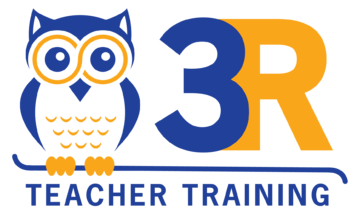Ah, middle school. That tumultuous time of growth spurts, unpredictable mood swings, and yes, the increasing complexity of math. As a seasoned teacher, I remember the day when, despite my best efforts, a sea of glazed eyes met my enthusiastic explanation of algebraic expressions. It's the age-old conundrum: How do you keep middle schoolers engaged in math when it seems like the entire universe is working against you?
Middle schoolers are caught in a unique liminal space: they're not little kids anymore, but they're not quite teenagers. Their brains constantly evolve, and a thirst for relevance comes with this growth. They constantly ask, sometimes silently, “Why should I care about this?”
Human beings are, by nature, storytellers. From the campfires of our ancestors to modern-day movie theaters, stories bind us. And science backs this up! Neurological studies have shown that our brains light up when engrossed in a story, helping us retain complex information. At first glance, it might sound peculiar. “You want me to use a children's book to teach algebra?” I hear you. But stay with me. Remember when young Harry Potter first discovered he was a wizard? That sense of wonder is universal, regardless of age. Children's books offer that wonder in spades.
In my own classroom, I once faced an uphill battle with fractions. My students found them abstract and, frankly, dull. On a whim, I introduced them to “The Lion's Share,” a tale of animals sharing a cake. My students grasped the concept of fractions and started debating whether they'd prefer to share their snacks like the ant or the lion from the story!
But how does one translate the world of children's tales to middle school math? It's simpler than you'd think. Consider “The Number Devil,” a delightful story about a young boy named Robert and his dreamy encounters with a mathematical sprite. Through their adventures, concepts like prime numbers and Fibonacci sequences come alive! And then there's the “Sir Cumference” series, which turned my geometry lessons into chivalric quests.
Here's a simple roadmap to embark on this literary-mathematical journey:
1- Pick a relevant children's book. Make sure it has clear mathematical themes.
2- Craft a lesson plan. How will the story unfold? At what point will you introduce the math problems?
3- Facilitate a discussion. Allow students to draw parallels between the story and the math concepts.
The results? Beyond mere comprehension, children's literature allows students to view math as a living, breathing subject. In my class, math anxiety dipped significantly. Students, who once saw math as a monster now view it as a friendly dragon from one of their favorite tales. Additionally, when you intertwine math with storytelling, you promote interdisciplinary learning. You're not just nurturing budding mathematicians; you're also cultivating storytellers, critical thinkers, and most importantly, lifelong learners.
Yes, there might be skeptics. “Isn't this approach watering down the curriculum?” they might ask. To them, I say: It's all about balance. While children's stories serve as a fantastic entry point, ensuring that students delve deep into the mathematical concepts post-introduction is vital. To quote a colleague, “It's not about replacing the curriculum, but enhancing it.” And it's not just me! Mr. Jacobs, an eighth-grade teacher from Texas, shared, “After using ‘Anno's Mysterious Multiplying Jar' to introduce factorials, not only did my students grasp the concept, but they were also eager to find more books that blended stories with math!”
Math doesn't have to be the ‘dreaded' subject. With a sprinkle of narrative magic, it can transform into one of the most awaited classes of the day. So, the next time your students seem distant during a math lesson, it's time to pull out a children's book and witness the magic unfold! For those looking to expand their library, dive into titles like “Math Curse” or “A Hundred Billion Trillion Stars”. And remember, in the intersection of stories and numbers lies boundless creativity and learning.

